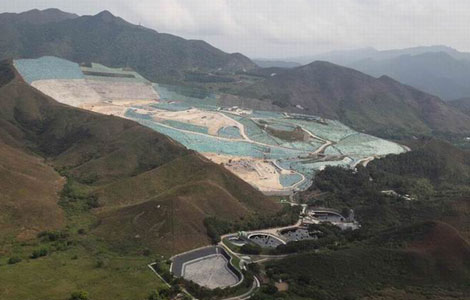China gives $3 billion to help poor
Updated: 2013-09-19 13:31
By Michael Barris in New York (China Daily)
|
|||||||||||
China is "leading the way" in the fight against global poverty by providing $3 billion to help emerging-market businesses develop economically vital infrastructure and housing, World Bank President Jim Yong Kim said.
"Ending extreme poverty and boosting shared prosperity in a generation are ambitious goals and to meet these goals we need to be innovative in our work with development partners," Kim said in a statement Wednesday as he ended a four-day China visit.
The World Bank's Washington-based private-sector development arm, International Finance Corp, said China will provide the funds in IFC-originated senior loans to private businesses in emerging markets for six years. The goal is to "support private sector development in emerging markets," IFC said in the release. A new IFC-launched program also will allow investors to co-invest with the institution in a portfolio of future emerging-market loans, it said.
Established by the World Bank Group in 1956, IFC seeks to advance economic development by investing in strictly for-profit and commercial projects which reduce poverty and promote development. For the year ended June 30, IFC syndicated about $3.1 billion in nancing for private-sector development in emerging markets. Its syndicated loan portfolio stands at $13.6 billion.
The financing announcement came on the nal day of Kim's trip, which had included meetings with top leaders in China and focused on urbanization, the environment and economic reform. On Sunday, Kim said the world's second-largest economy is on the right track by pushing for economic reforms and tackling severe air pollution problems, even as its economy slows amid a restructuring.
"It's encouraging that, despite growth having slowed, the Chinese government sticks to the reforms and has a strong commitment to tackling the pollution problem," Kim told China Daily in Shanghai. He said China is likely to achieve its growth target of 7.5 percent this year amid signs that the economy, which is shi ing to a consumption-driven model from an investment- and export-driven one, is stabilizing.
To combat air pollution, China has said it will reduce carbon emissions per unit of GDP by 40 to 45 percent by 2020 from 2005 levels. It aims to increase renewable energy to 15 percent of its total energy consumption by 2020 from 8 percent in 2011. Last week it said it would close old polluting steel mills, cement factories and aluminum smelters, reduce its coal consumption and boost the use of nuclear power and natural gas.
In his final speech on Wednesday, Kim called on China to plan its massive urbanization better to limit environmental damage and to ensure that millions of migrants benet more from the process. In the past 30 years, China's urban population has jumped to more than 700 million from less than 200 million. The dramatic shift sometimes has triggered violent clashes over expropriation of farmland for development, as well as water shortages, pollution and other problems.
"China is well aware that its rapid urbanization and rapid economic growth has come at a cost, even as that growth has lifted hundreds of millions of people out of poverty," Kim told a news conference. "China now needs to find new ways to make cities more energy efficient, promote clean energy, and reduce trac congestion and air pollution," he said. "If China breathes easier, the world will breathe easier, too."
As part of eorts to make consumers the economy's main driver, China's leaders aim to have 60 percent of its almost 1.4 billion population be urban residents by 2020.
Kim said the bank hopes China can build denser cities where people live closer to their work, with better transportation systems. e World Bank is working with the Development Research Centre to shape a "strategic view" on how China should proceed with urbanization, he said, adding that their report could be made public by December.
Premier Li Keqiang recently agged the need for "humanity-centered" urbanization and he solicited views from Chinese experts on how to improve the process.
The National Development and Reform Commission (NDRC) delayed release of an urbanization plan from the rst half of the year. A top ocial has said it will come out in the second half.
The World Bank chief said another important issue for China to tackle is protecting farmers' rights to land, and seeing that they "share the benefits of land development in a more equitable way." Farmers in China do not own their elds directly. Instead, most rural land is owned collectively by a village, and farmers get decades-long leases.
In theory, the villagers can collectively decide to apply to sell o or develop land. In practice, however, local governments usually decide land sales and get the bulk of the revenue.
Reuters contributed to this article.
Contact the writer at michaelbarris@chinadailyusa.com
Related Stories
More disabled lifted out of poverty 2013-09-13 16:52
Reducing poverty gains momentum in Asia 2013-09-12 09:16
Can mobile money alleviate poverty in rural China? 2013-08-07 07:16
Eradicating poverty still important 2013-07-22 08:23
World Bank seeks end to extreme poverty by 2030 2013-04-03 14:29
China spends more on rural poverty relief 2013-03-29 16:07
Today's Top News
Li plans to seek deeper trust with neighbors
Obama to name Yellen as next Fed chair
Obama says he'll negotiate once 'threats' end
Xi calls for more APEC connectivity
Hey, big Chinese spenders
Wet weather fails to dampen FTZ interest
Service-sector expansion slows
RMB strengthens to new high against USD
Hot Topics
Lunar probe , China growth forecasts, Emission rules get tougher, China seen through 'colored lens', International board,
Editor's Picks

|

|

|

|

|

|





